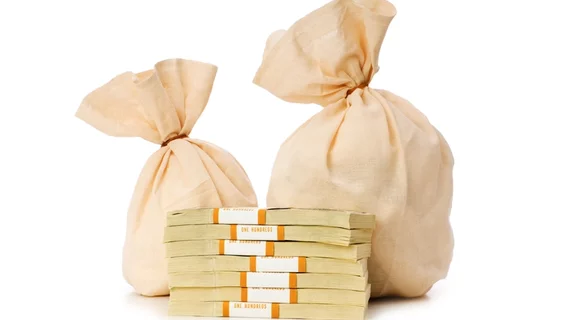Same-day discharge following elective percutaneous coronary intervention (PCI) was safe and resulted in more than $5,000 in savings per procedure, according to an analysis of operations performed from 2006 through 2015. Yet only 9.1 percent of interventions that were studied achieved same-day discharge, representing a huge opportunity to trim healthcare costs in the United States.
Even that 9 percent rate of same-day discharge (SDD) may have been attributed to a few larger centers performing a large number of SDD procedures, noted researchers led by Amit P. Amin, MD, MSc, in JAMA Cardiology. Indeed, after adjusting for the number of hospital beds and other hospital and patient characteristics, the authors calculated an adjusted SDD rate of 3.5 percent among 672,470 elective PCIs—jumping from 0.4 percent in 2006 to 6.3 percent in 2015. Transradial access was independently linked to a 45 percent increase in the odds of SDD.
“With the increasing pressure on hospitals to improve the quality and value of their services, reducing the costs of elective PCI is an important opportunity to explore,” the authors wrote, pointing out that about half of the 600,000 PCIs performed annually in the U.S. are elective procedures.
“In fact, alternative payment models, such as the Centers for Medicare and Medicaid Services episode payment models, commonly known as ‘bundled payments,’ are influencing hospitals to prepare for the shift in reimbursements from ‘payment for volume’ to ‘payment for value.’”
Amin, with Washington University School of Medicine in St. Louis, and coauthors found the proportion of patients discharged the same day following PCIs ranged from 0 to 83 percent, depending on the hospital. They said the likelihood that an identical patient would receive SDD would vary an average of four-fold from one hospital to the next.
Notably, hospitals with higher incidence of SDD didn’t perform significantly better on safety measures than those with lower rates of SDD when they decided to release a patient on the same day. And SDD patients in general didn’t have higher rates of death, major bleeding, acute MI or acute kidney injury (AKI) at 30 days, three months or one year compared to patients who were discharged later in the hospital admission.
“Given the safety and large savings of more than $5,000 per PCI associated with SDD, greater and more consistent use of SDD could markedly increase the overall value of PCI care,” Amin and colleagues concluded.
Most of the average savings of $5,128 was linked to lower costs for supplies as well as room and board. According to the researchers, if all centers were able to achieve the 44.5 percent rate of SDD that was present in the top decile of hospitals, it would result in an estimated $577 million in annual savings. Even assuming current practice is 22.3 percent SDD—which was reported for the fourth quarter of 2017 from the national CathPCI data registry—a shift from there to 44.5 percent SDD would save $341 million annually.
“It is unclear if outdated hospital policies, physician inertia, or concerns regarding patient safety limit the uptake of SDD after elective PCI,” Amin et al. wrote. “While complications are generally rare after elective PCI, when they do occur, they usually do so in the first few hours after PCI, facilitating the identification of patients who are unsafe for SDD. The practice of overnight observation for all patients after elective PCI for the concern for patient safety is not evidence-based.”
Based on the wide variability in SDD rates across hospitals, the researchers instead suggested post-PCI discharge protocols “are essentially random and likely driven by the local culture.”
“It implies that (1) some hospitals are more comfortable than others in performing SDD and (2) the evidence base for SDD is not strong, hence SDD practices across hospitals are culturally derived rather than evidence-based,” the researchers wrote. “In a recent study from Barnes Jewish Hospital, we found that developing a ‘patient-centered’ protocol for SDD based on patients’ predicted risks of complications, such as bleeding and AKI, led to a rapid adoption of SDD in more than 70% of patients undergoing elective PCI and was associated with a $1.8 million cost savings annually in hospitalization costs.”
Amin and colleagues noted their study had a strong likelihood of confounding by indication, meaning patients deemed healthy enough for SDD may have been predisposed to good outcomes down the line. Nevertheless, the low odds of adverse events observed all the way out to one year further indicate SDD is safe in appropriately selected patients, the authors wrote.

